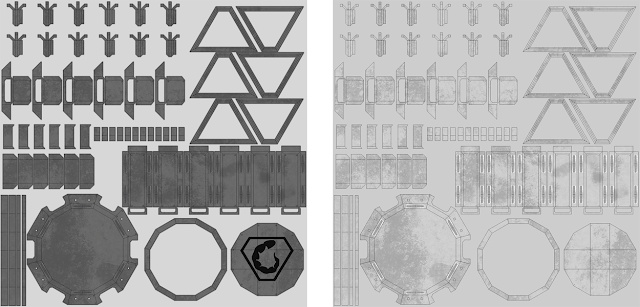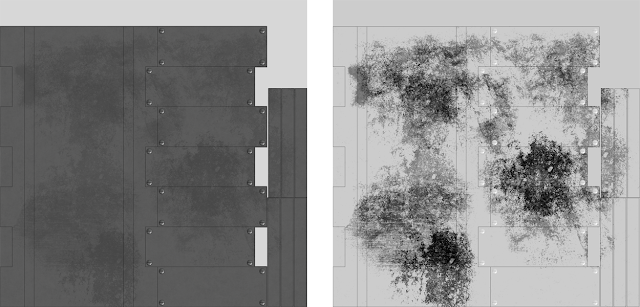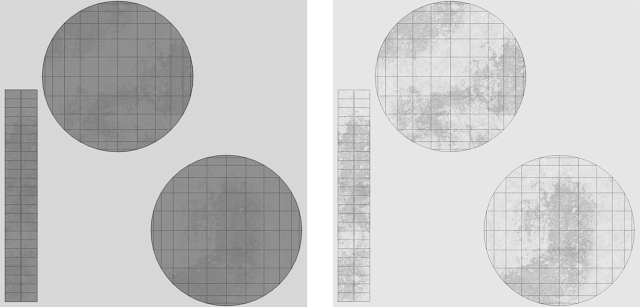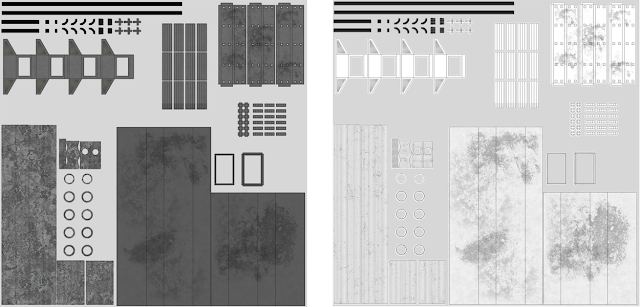I've waited until after my group had done its presentation to post my full documentation/write up for our contextual studies project. So first of all, here is our script:
Jonathan:
Hi my name is Jonathan.
Nathan:
My name is Nathan.
Kai:
My name is Kai.
Dexter:
and my is name Dexter.
Jonathan:
and we are going to be talking about how the east and west have influenced each other artistically.
Jonathan:
The link between the west and the east has existed since prehistoric times. However it truly flourished during the Han dynasty in 206 BCE, this is known as the silk road. Which was a trading route between China, India, Ancient Egypt, Persia, Arabia, and Ancient Rome. Due to this vast trading, many artistic influences transited along the silk road. Some examples of transmission of art include the Hellenistic Style and the Grecco- Buddhist style.
However, due to problems such as the black plague, medieval times and general conflicts, trade and transmission of art softened greatly. This however changed when Japan opened its borders to the west in 1844. This new trade between Japan and the west led to a lot of Japanese wood block prints (ukiyo-e) making their way to France and to some extent to Britain. This was called Japonism.
Kai:
Due to WW2 and the heavy influence of nationalism on both sides of the war transmission of art was almost halted indefinitely, this however changed post world war two due to American occupation in Japan and communist influence in China, Korea and south Asia. Communism had a very distinctive art style as well as being a political movement.. This was originating in France after the French revolution and Russia, post-world war two these influences weighed heavily on the east particularly in Korea & China. This affected artist movements and even politics.
Meanwhile in American occupied Japan, American art had a strong influence on Japanese comics and cartoons. In fact the term anime was coined from the American word animation. Osamu Tezuka created Astro Boy which is considered one of the most popular Japanese Manga’s of all time. It has definite influences from Disney cartoons such as Dumbo and Bambi especially when looking at the big style eyes. This went full circle because Osamu’s next big hit Kimba: The White Lion (1963) has long been said to have been influenced by Disney’s Lion King.
In 1994 Japanese anime exploded in the U.S. It became a widely watched phenomenon, where in American companies they tried to emulate what Japan had done with shows like Samurai Jack, Teenage Mutant Ninja Turtles, Shaolin Showdown & Avatar: The Last Air bender. These combined the styles of both anime and American cartoons. While at the same time they changed existing characters such as wolverine to have more Asian influences.
Dexter:
Eventually the influences have moved upon the media of video games, with one of the earliest examples being Metroid. From the general setting to the protagonist Samus Aran herself, game designer Yoshio Sakamoto claims the film Alien has had a huge influence on the game and all of the team members were affected by HR Giger’s work. This went on further to nurture what is now known as the Metroid series of games.
On the more realistic themes we have games like Contra, Bionic Commando and Metal Gear, all of which carry a large influence over action movies from the west. The latter game, designed by Hideo Kojima, has practically borrowed the appearances of real life actors for the primary characters with Silvester Stallone being the face for Solid Snake and Sean Connery for Big Boss. Being a fan of this movie genre the designer has intended to create a cinematic experience based from them, which eventually has escalated into one of the most popular games in history and placing Snake as an iconic cultural icon.
But of course one cannot neglect to mention the fantastic side of the influences, which blossomed with the role-playing genre. From these the two most popular franchises of all time happen to be Dragon Quest, which had a highly strong inspiration from medieval European myths and legends and Final Fantasy, a game originally influenced by the pen-and-paper RPG Dungeons and Dragons which eventually grew to incorporate elements from several of the world’s more esoteric folklore. All of the earliest instalments of the series were graphically designed by the artist Yoshitaka Amano, whose style is very Asian but incorporates many Western themes.
Nathan:
The influential impact goes both ways; there are western games that are influenced by Japanese art styles, an example would be Oni and Wakfu. Oni is a game developed by bungee which is heavily inspired by classic anime such as “Ghost in a Shell”, a popular Japanese anime by Masamune Shirow, while Wakfu similarly atoned to the anime art style. On the other hand games such as Heavenly Sword, Jade Empire and Enslaved: Odyssey to the West, are games that are more of an amalgam that have influences from Asian art and general culture but are still western games at heart.
The other side of it are games that have taken visual cues from contemporary games such as Crash Banditcoot and Spyro The Dragon. These characters were based on Asian created characters such as Donkey Kong, Mario, and Sonic the Hedgehog. Other games such as Drawn to Life, Scribblenauts and even to some degree Farmville have similar features such as out of proportion heads, large eyes and minimal facial features such as the Japanese style Chibi.
In conclusion, throughout history the east and west have affected each other back and forth. This has happened throughout events such as the establishment of the Silk Road, the opening of Japans borders, the outcome of war, but more importantly, the general migration of people. These artistic differences have seeped into mediums such as comic, film, television and art. They have become a familiar mixture culture throughout the world, to the point where the lines have been blurred. In relation to video games, they have adapted to the cultural change as time has passed. Games being a modern medium, much like technology itself, signify a merged ideology, uniting cultures over the world.
Overall, I think as a group we wanted our presentation to be full of detail and very informative. We included artist names as well as a small reference to each of the games that we used in our comparisments. I would say that we focused more on the facts than giving our own opinions, but of course we did present it from our point of view, which arguably makes it slightly biased. So, moving on... Time to explain how we went about our group work. We first split into two groups (Jonathan & Kai and Myself and Dexter) to attack two sides of our chosen subject. Jonathan and Kai were to research the history and reasons behind the influences on the west and the east while me and Dexter were to research how those influences had effected modern and classic games. Me and Dexter then divided again, Myself researching the east's influence on the west and Dexter researching the west's influence on the east.
The first article linked covers a large topic in a fairly summarised document. It covers aspects such as pop culture, eastern and western art styles as well as orientalism and game studies. The second article while slightly detracting from our title, talks about how originally the west adopted eastern styles of games over time but are now walking a different path.
I broke my particular subject into two sections, games that took direct influences from the east and games that took small visual cues. Starting off my first section I picked two games, Oni (
http://www.rockstargames.com/oni/main.html) and Wakfu (
http://www.wakfu.com/en/mmorpg). Both of these games art style is heavily inspired by Japanese anime (see examples below), which is why I brought up the popular anime Ghost in a Shell (
http://en.wikipedia.org/wiki/Ghost_in_the_Shell): I chose this as it is one of the more popular classics that is well known in the west.
 |
| Left: Oni Right: Ghost In A Shell |
Considering that Oni was created in the west by "western" people, the similarity between the styles, and even the characters is uncanny. This resemblance between Konoko (the protagonist from Oni) and Motoko Kusanagi (the character in the above image for Ghost In A Shell) was particularly why I chose to compare the games. I then went on to talk about the games Heavenly Sword, Jade Empire and Enslaved: Odyssey to the West, which are more of a mix of western and eastern Asian art styles but are still essentially western games. They are still greatly influenced by anime, but throw in other styles such as Manga (Whats the difference between Anime and Manga? Manga is normally the comic book style of art while Anime is the animation style for animated Manga, there are some exceptions).
Next up, games that have taken visual cues. Again, I picked some well known characters from games that even people who are not familiar with games will know such as Crash Bandicoot and Spyro The Dragon. The above characters have taken visual cues from other popular game characters such as Donkey Kong, Mario and Sonic the Hedgehog.
 |
| Donkey Kong |
 |
| Mario |
 |
| Sonic the Hedgehog |
 |
| Spyro the Dragon |
 |
| Crash Bandicoot |
From the above images you can see the similarities in styles, If you had no knowledge of the creation of the characters, it would prove difficult to identify which characters were produced in the east, and which in the west.
Moving on from games that blur the lines between the artistic styles, I talked a little about games that shared some similarities in the artistic styles such as Farmville, Drawn to Life and Scribblenauts (see below). These games have art styles similar to those of the east: Out of proportion heads with large eyes and minimalistic facial features (like the Japanese style Chibi:
http://en.wikipedia.org/wiki/Chibi_(term)).
 |
| Farmville |
 |
| Drawn to Life |
 |
| Scribblenauts |









